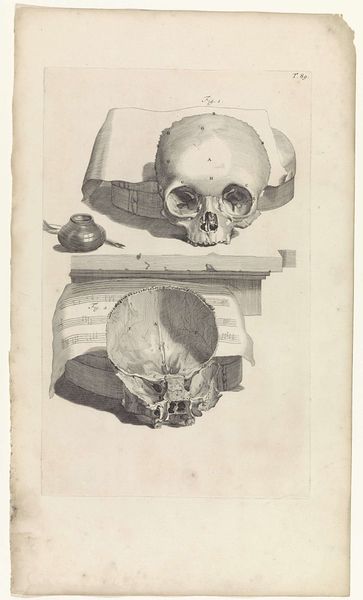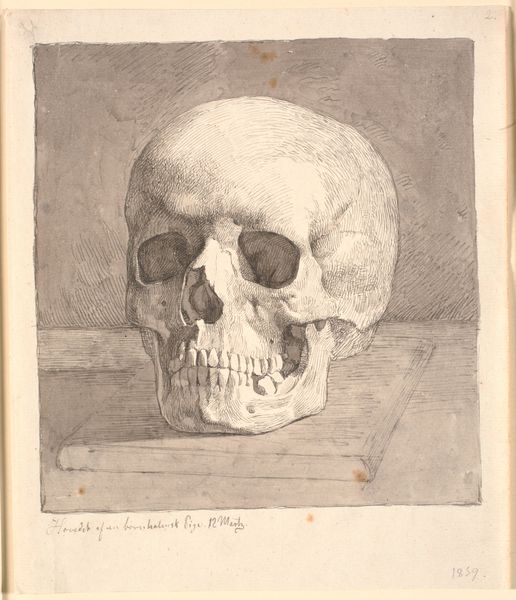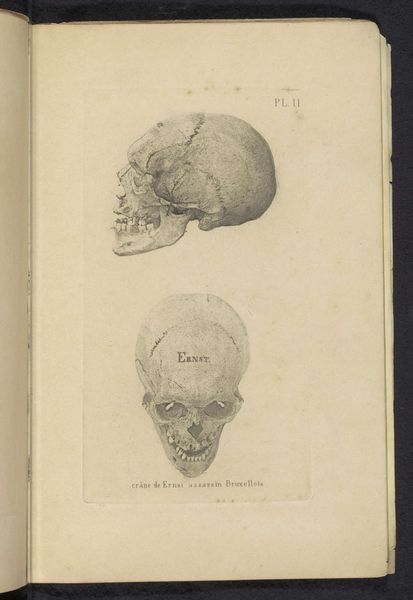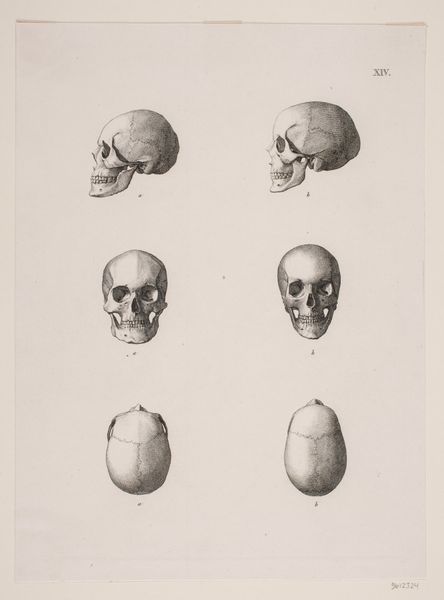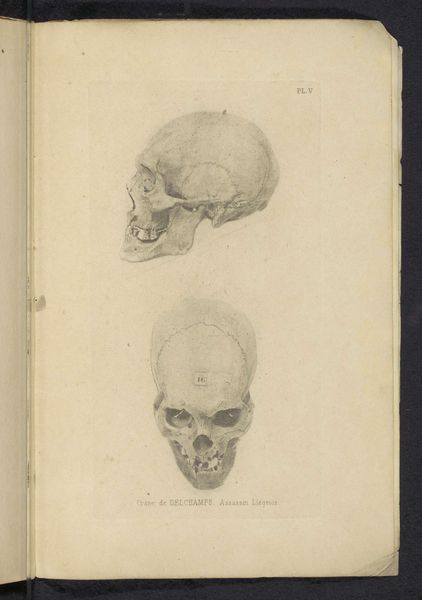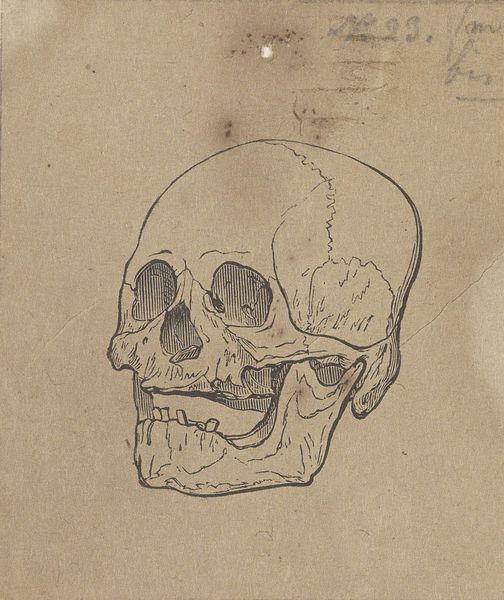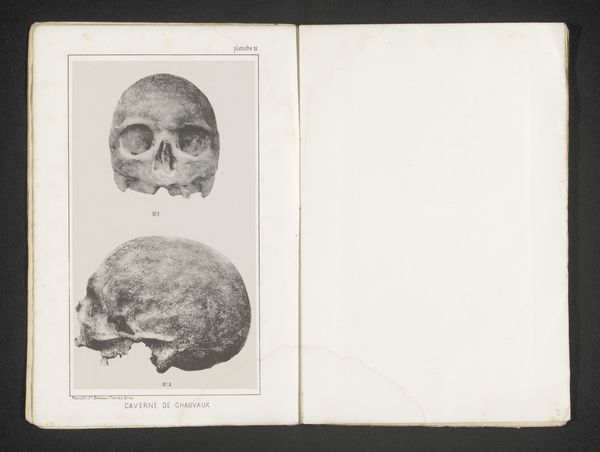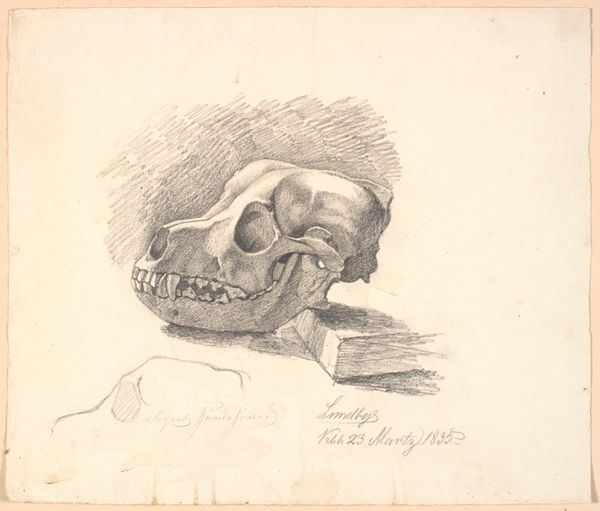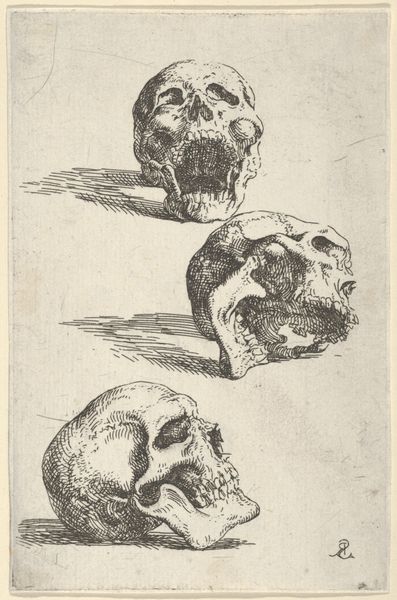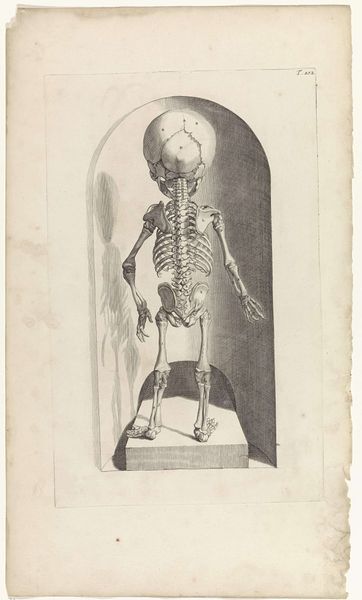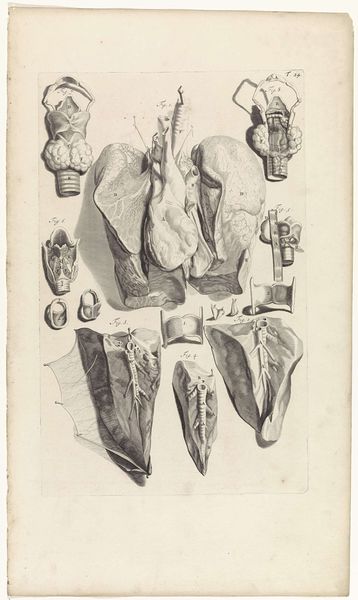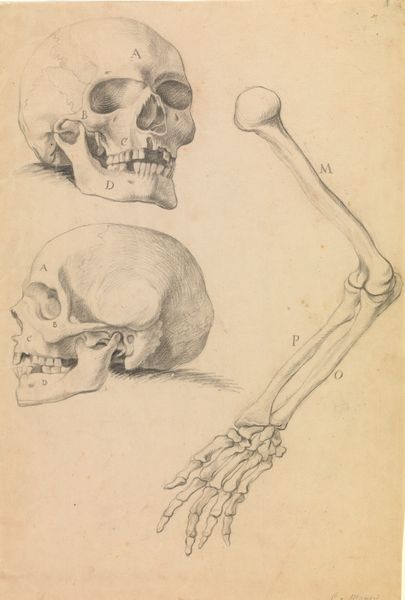
drawing, print, engraving
#
drawing
#
baroque
# print
#
form
#
line
#
history-painting
#
academic-art
#
engraving
#
realism
Dimensions: width 274 mm, height 442 mm
Copyright: Rijks Museum: Open Domain
Editor: Here we have Pieter van Gunst’s "Anatomische studie van een schedel en de kaak" from 1685, currently held in the Rijksmuseum. It’s an engraving depicting various views of a skull and jaw. I find the clinical detail fascinating, almost unsettling in its realism. What do you see in this piece? Curator: This work speaks volumes about the burgeoning scientific curiosity of the Baroque era and its complicated relationship with the human body. While seemingly objective, these anatomical studies were inevitably shaped by the socio-political climate. Whose bodies were subjected to this level of scrutiny, and why? These images naturalize power dynamics. What do you think the books placed under the skull signify? Editor: I hadn’t thought about the power dynamics involved. The books could represent knowledge or perhaps even the social status attached to education and learning. The skull is literally resting on knowledge. Curator: Precisely. Consider how access to medical knowledge and anatomical study was historically limited, often excluding marginalized communities. Furthermore, think about the gaze involved – who is authorized to dissect and display these bodies, and what biases might they bring to their observations? Does the artist engage with power, and if so, how? Editor: That’s a really important point. The image appears neutral at first glance, but your perspective reveals how it might reinforce existing inequalities by controlling whose bodies are displayed and studied. I now wonder about who produced these images. Curator: Exactly! Reflecting on this image encourages critical engagement with the history of medicine and science. These clinical observations aren't made in a vacuum and can expose underlying social structures. What can you conclude from that? Editor: I realize that even seemingly objective depictions of the human body can be laden with social and political meaning. Thank you for opening my eyes! Curator: And thank you. These conversations ensure that we can start challenging the neutrality that has for so long defined historical artworks like these.
Comments
No comments
Be the first to comment and join the conversation on the ultimate creative platform.
